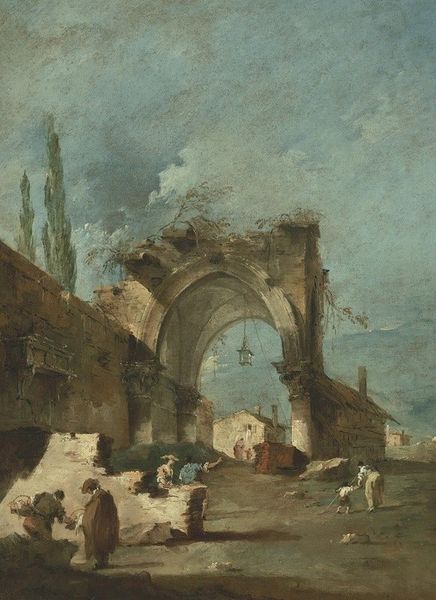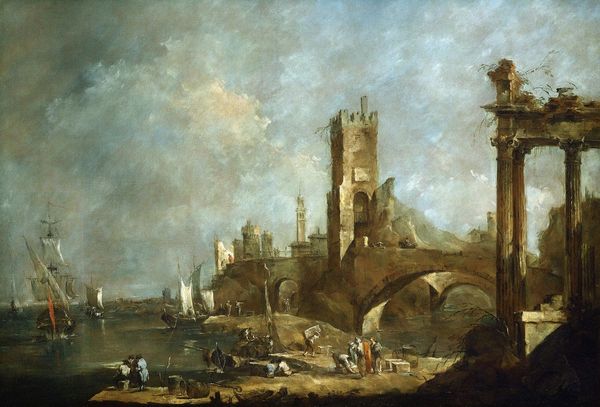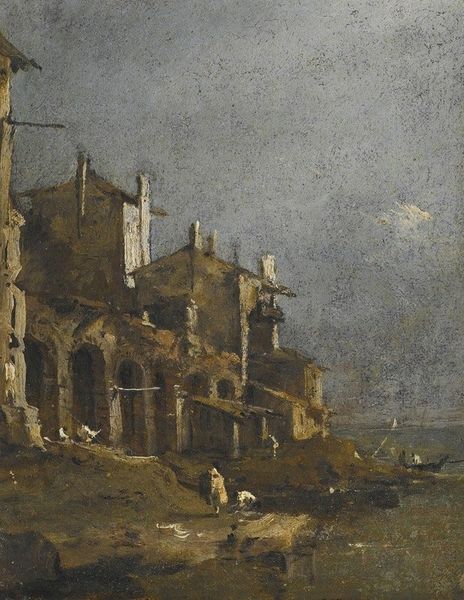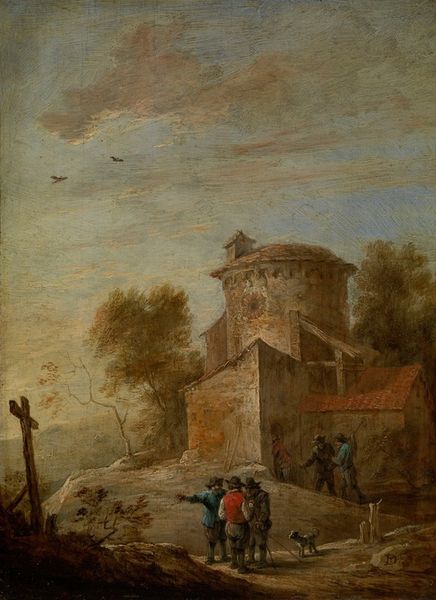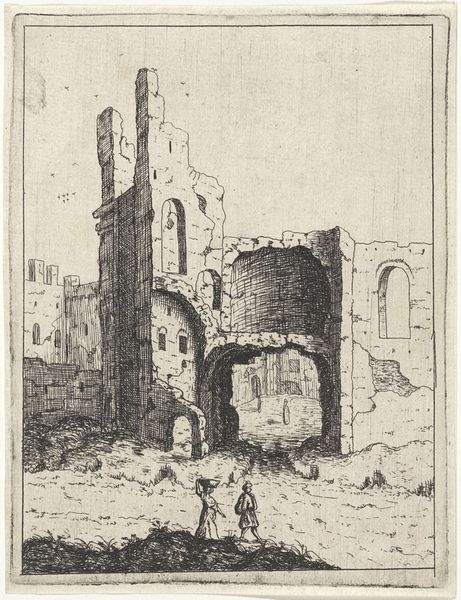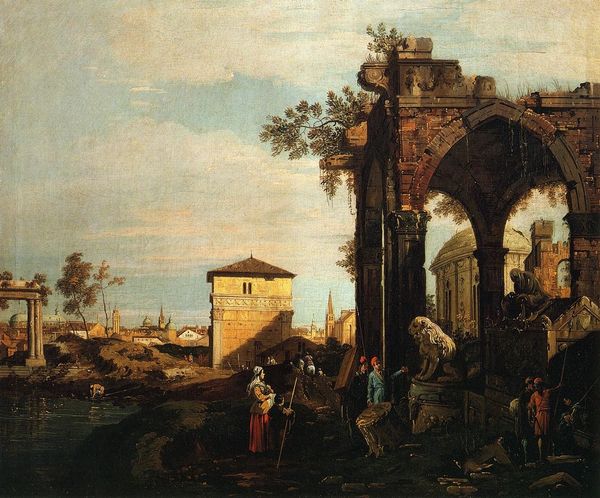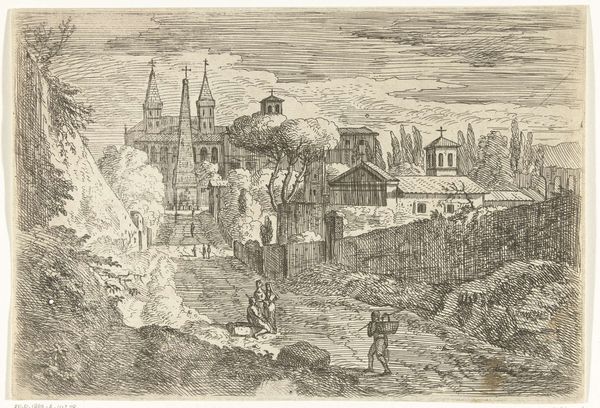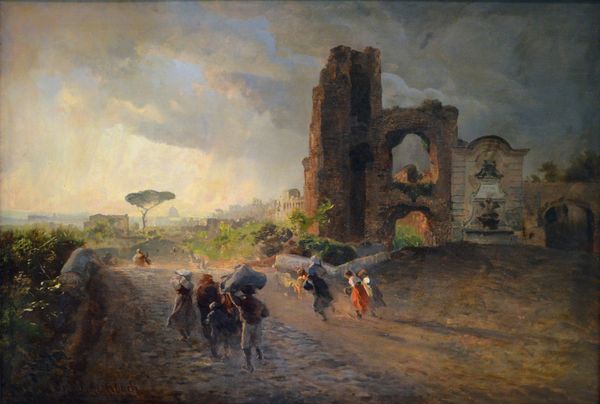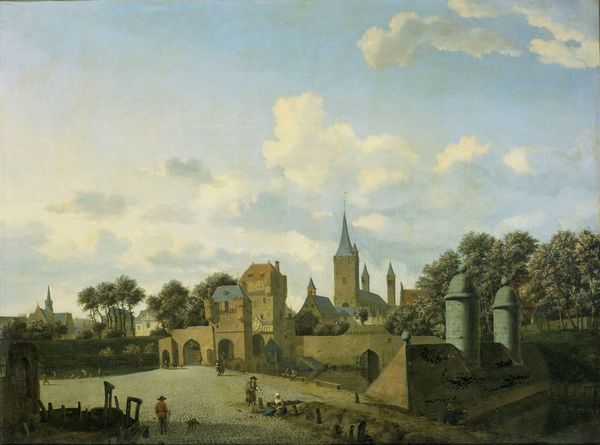
painting, oil-paint
#
neoclacissism
#
painting
#
oil-paint
#
landscape
#
oil painting
#
history-painting
Copyright: Public Domain: Artvee
Curator: Here we have Hubert Robert's "The Demolition of the Church of Saint-Jean-en-Grève, in 1800," rendered in oil paint. It presents quite a scene. Editor: Wow. My immediate reaction is this intense feeling of melancholic awe. It's like witnessing the brutal beauty of change itself, like a phoenix, or the birth of an era out of the ashes of another. What are your initial thoughts? Curator: It's impossible to ignore the context. This church, razed in 1800, stands as a potent symbol of the French Revolution’s anti-clerical fervor. The demolition wasn't just about bricks and mortar; it was a calculated strike against the power structures and belief systems of the old regime. Editor: Absolutely, it’s almost visceral. Looking at those diminutive figures scattered amidst the rubble – are they gleeful destroyers or passive onlookers? They're dwarfed by the immensity of the destruction, which makes one ponder about the role of ordinary people during moments of cataclysmic shifts, no? Curator: Precisely! That contrast in scale between the people and the architecture, it’s strategically deployed to highlight the individual's place within the larger forces of historical upheaval. And considering the art movements and ideologies Robert was inspired by, particularly Neoclassicism, we need to remember how concepts of civic virtue were tied up to these transformations. Editor: Hmmm, thinking about Neoclassicism, the geometry inherent to the standing tower feels strange. Almost ironic in its stoic defiance. Maybe I’m just being whimsical here but the image leaves me suspended between mourning what's lost and sensing the potentiality that lurks amidst destruction. It has the air of an apocalypse. Curator: The architectural landscape that Robert was cultivating was meant to make people critically reflect on power, memory and collective trauma. With Neoclassicism we understand better how the emphasis on rational order became the backdrop for social upheavals and reassessments of societal values. Editor: It makes you realize that buildings are more than just stone; they are narratives, living testaments of ideals—being physically erased here. It is the drama that persists as one looks at these brushstrokes… Curator: Yes, looking closely, consider the dynamic tension that characterizes this period! This painting offers insight into that clash. Editor: It really does invite a certain type of introspection, or contemplation, that is less about the fall, but more about what can emerge thereafter. Curator: I think we’ve managed to excavate some crucial layers of meaning, haven't we? Hopefully it gives a contemporary lens on Robert’s art.
Comments
No comments
Be the first to comment and join the conversation on the ultimate creative platform.
